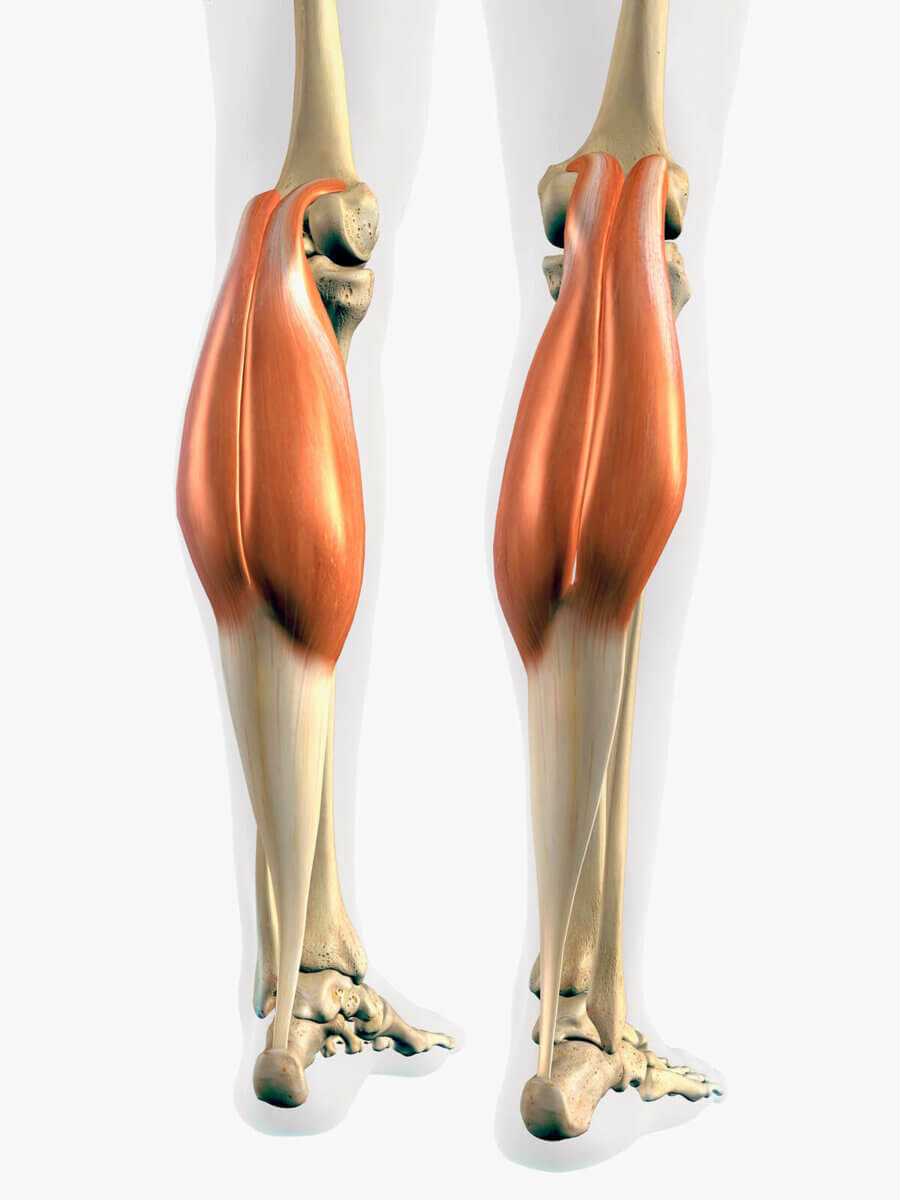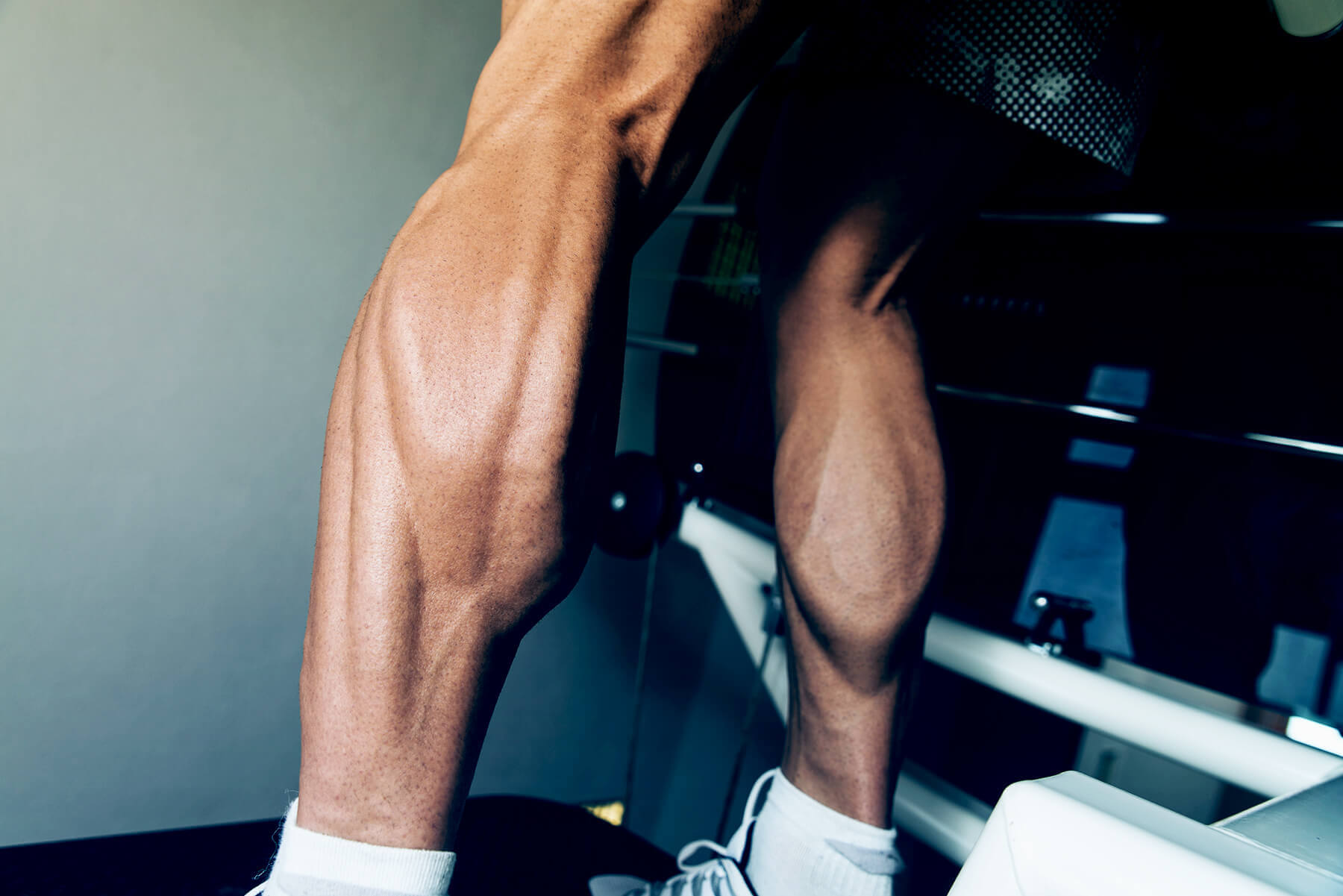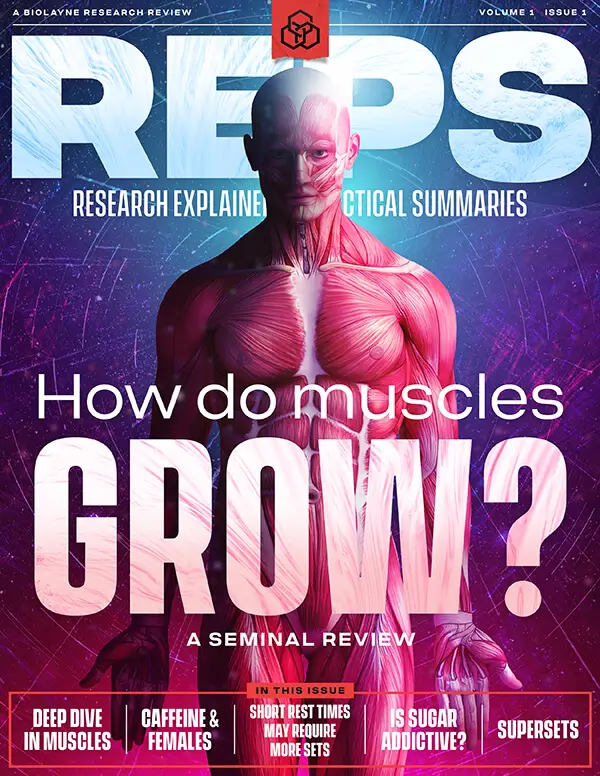Changing foot position to target specific calf muscle areas has been common practice by many bodybuilders. Is this bro-science, or is there evidence to suggest this strategy is effective at increasing calf growth? Let's look at a well-done study published a few years ago investigating how pointing your toes in vs. out can influence calf growth.
Overview
- What did they test? Muscle thickness (ultrasound) of the gastrocnemius following calf raises with toes pointed in, out and pointed forward.
- What did they find? Muscle thickness of the lateral gastrocnemius increased most by training with toes pointed in and training with toes pointed out caused greater hypertrophy of the medial gastrocnemius, with similar increases observed by training with toes pointed forward.
- What does it mean for you? If you want to target the lateral head of the gastrocnemius focus more on training with your toes pointed in and if you want to target hypertrophy of the medial gastrocnemius train more frequently with your toes pointed out.
What’s the Problem?

The calf is scientifically referred to as the triceps surae because it is composed of three different muscles. The gastrocnemius consists of the two large (lateral and medial) muscle bellies. The soleus lies underneath the larger gastrocnemius. For bodybuilders, calf development is critical to maximize muscle proportions and achieve a fully developed physique. Early in Arnold Schwarzenegger’s career, his biggest weakness was his calves. After years of commitment to improving his calves, they became one of his strong points. Many will not argue that seeing someone in public with big arms is impressive, but what is under-appreciated is when someone has giant calves. Unfortunately for some, the calves can be stubborn to growth 2. Some people train with different foot positions during calf raises to improve calf development. Evidence indicates that altering foot position can influence gastrocnemius muscle activity 3 4 5 6. However, we also know that muscle activation does not necessarily lead to long-term changes in muscle growth. Well, lucky for all of us, the study we are reviewing here did evaluate muscle growth of the gastrocnemius by performing calf raises with toes pointed in or out 1. Last month we covered a study investigating fiber type-specific hypertrophy of the calf, which gives a bit more insight into the physiology and anatomy of the calf.
Purpose
The purpose of this study was to compare changes in muscle thickness (MT) of the medial gastrocnemius (MG) and lateral head of the gastrocnemius (LG) following training with feet pointed outward (FPO), feet pointed inward (FPI), or feet pointed forward (FPF) during calf raises.







